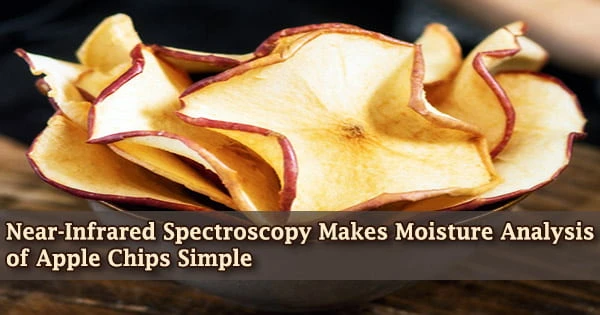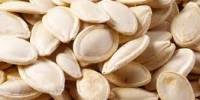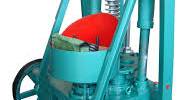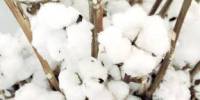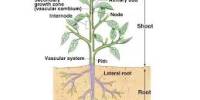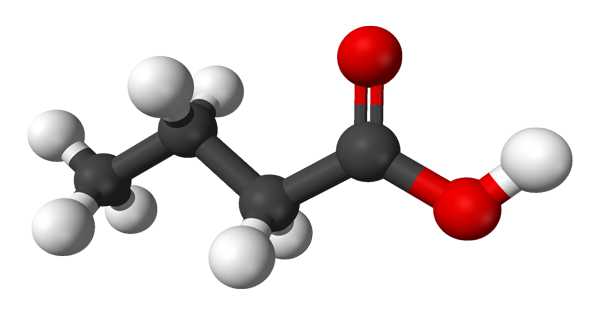Apple chips, for example, are a convenient dried snack item that has a longer shelf life and is easier to store than fresh fruit. Companies coat snack items with fruit and vegetable powders to boost taste and sensory appeal as consumers want more diversity.
The drying process of coated and uncoated apple chips is investigated in a new study from the University of Illinois, which uses near-infrared (NIR) spectroscopy to assess moisture content in real-time. According to the researchers, NIR technology considerably improves measurement speed and accuracy.
According to Ragya Kapoor, a graduate student in Food Science and Human Nutrition (FSHN) at the University of Illinois and the paper’s lead author, the coating’s objective is to make dried apple chips more functional and nutritional, as well as more enticing to eat.
“The idea is to get school-aged children to include apple chips in their diet. We use a cranberry powder coating to make the apple slices more attractive in terms of color and taste,” Kapoor says. “We dip the apple slices in a liquid-based solution for 60 seconds twice, and then conduct the hot air-drying operation.”
The researchers use miniaturized NIR spectroscopy to evaluate the moisture level of the chips at various points during the drying process to guarantee they are dry enough.
According to Mohammed Kamruzzaman, assistant professor in the Department of Agricultural and Biological Engineering (ABE) at the University of Illinois and co-author on the work, NIR technology has numerous advantages over traditional monitoring techniques.
“In traditional methods, you take samples from the production for lab analysis. The process takes at least 24 hours, the samples are destroyed, and some analyses require harsh chemicals,” Kamruzzaman notes.
The idea is to get school-aged children to include apple chips in their diet. We use a cranberry powder coating to make the apple slices more attractive in terms of color and taste. We dip the apple slices in a liquid-based solution for 60 seconds twice, and then conduct the hot air-drying operation.
Ragya Kapoor
NIR spectroscopy takes only a few seconds, requires no sample removal, and utilizes no chemicals. It is extremely accurate, quick, does not degrade samples, and does not require the use of chemicals. It’s a green, long-term solution.
Traditional laboratory techniques necessitate the use of professionals to operate the equipment and analyze the results. NIR is simple to operate, and with just a few minutes of training, practically anyone can operate the equipment and take measurements. Furthermore, the equipment is compact and portable.
NIR works by scanning the product with invisible light, Kamruzzaman explains.
“With our eyes, we can see the size, shape, and color of food, but we cannot see the nutritional composition. The near-infrared light reads the chemical bonds in the food, so you can analyze any biological matter and determine features such as moisture content, protein, fat, fiber, or carbohydrates. The NIR spectroscopy will give you many data points; we extract the data and use machine learning to interpret the results,” he states.
“The combination of NIR spectroscopy and machine learning is very powerful.”
There were two key research aims for Kapoor, Kamruzzaman, and study co-authors Amir Malvandi, a doctoral student in ABE, and Hao Feng, a professor of food and bioprocess engineering at the University of Illinois. They intended to investigate edible coating on apple slices and see if NIR spectroscopy might be used to track the drying process of coated versus untreated slices.
“The moisture content is different for coated and uncoated samples, and we wanted to see how drying behavior differs for them. We found that with NIR technology we are able to differentiate between the two samples based solely on the difference in their composition,” Kapoor explains.
The researchers say NIR spectroscopy can greatly enhance production efficiency.
“NIR allows you to see your product’s changing moisture content in real-time. You can continuously monitor the drying process, observe the amount of dry matter, and decide the right time to stop,” Kamruzzaman states.
The University of Illinois’ College of Agricultural, Consumer, and Environmental Sciences houses the Departments of Food Science and Human Nutrition and Agricultural and Biological Engineering.
LWT Food Science and Technology (https://doi.org/10.1016/j.lwt.2021.112602) released a paper titled “Real-time moisture monitoring of edible coated apple chips during hot air drying using miniaturized NIR spectroscopy and chemometrics.”
The study was supported by Agriculture and Food Research Initiative (AFRI) awards # 2018-67017-27913 and # AG 2018-68006-28097 from the USDA National Institute of Food and Agriculture (NIFA), and the USDA-NIFA, Hatch project ILLU-741-334.
